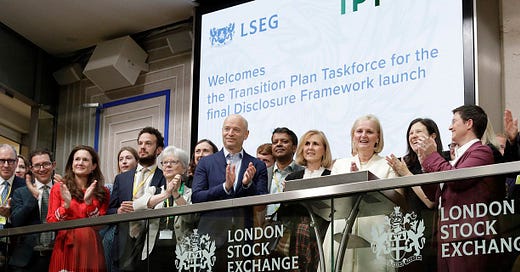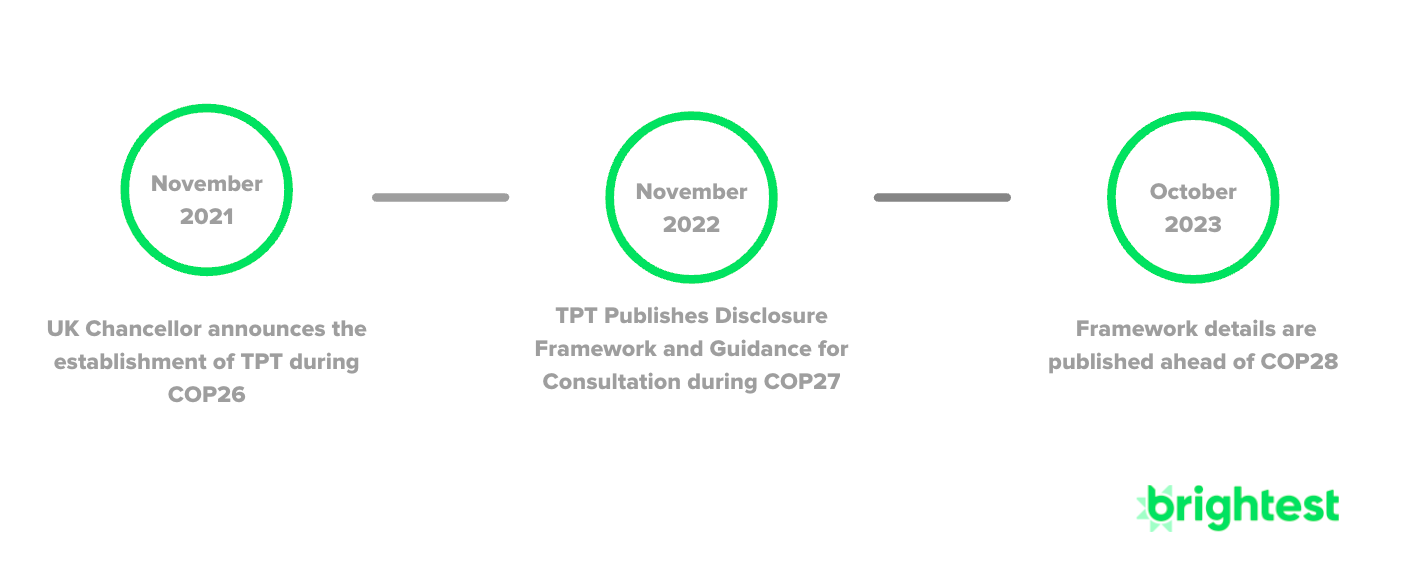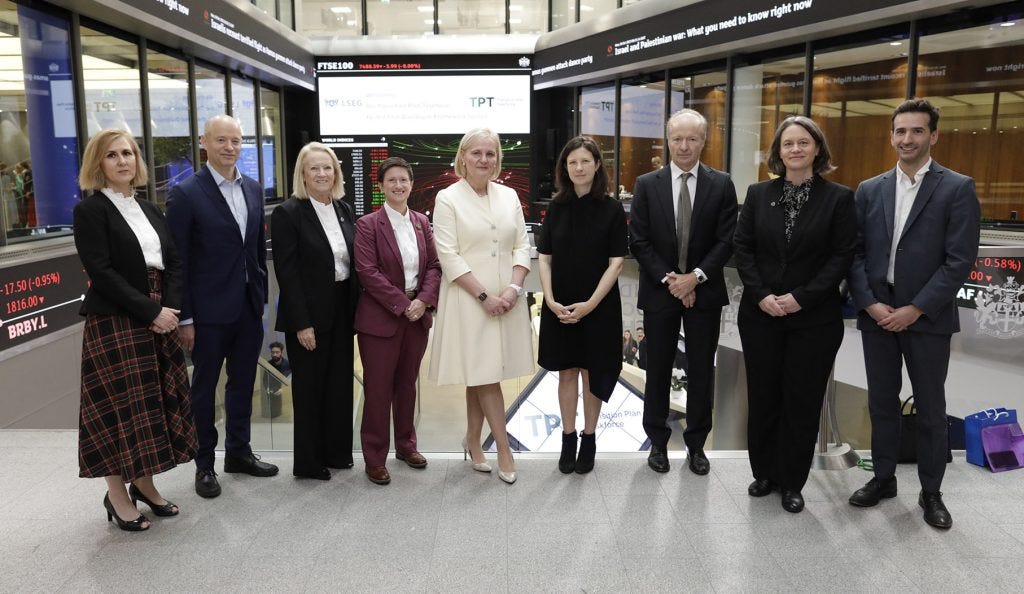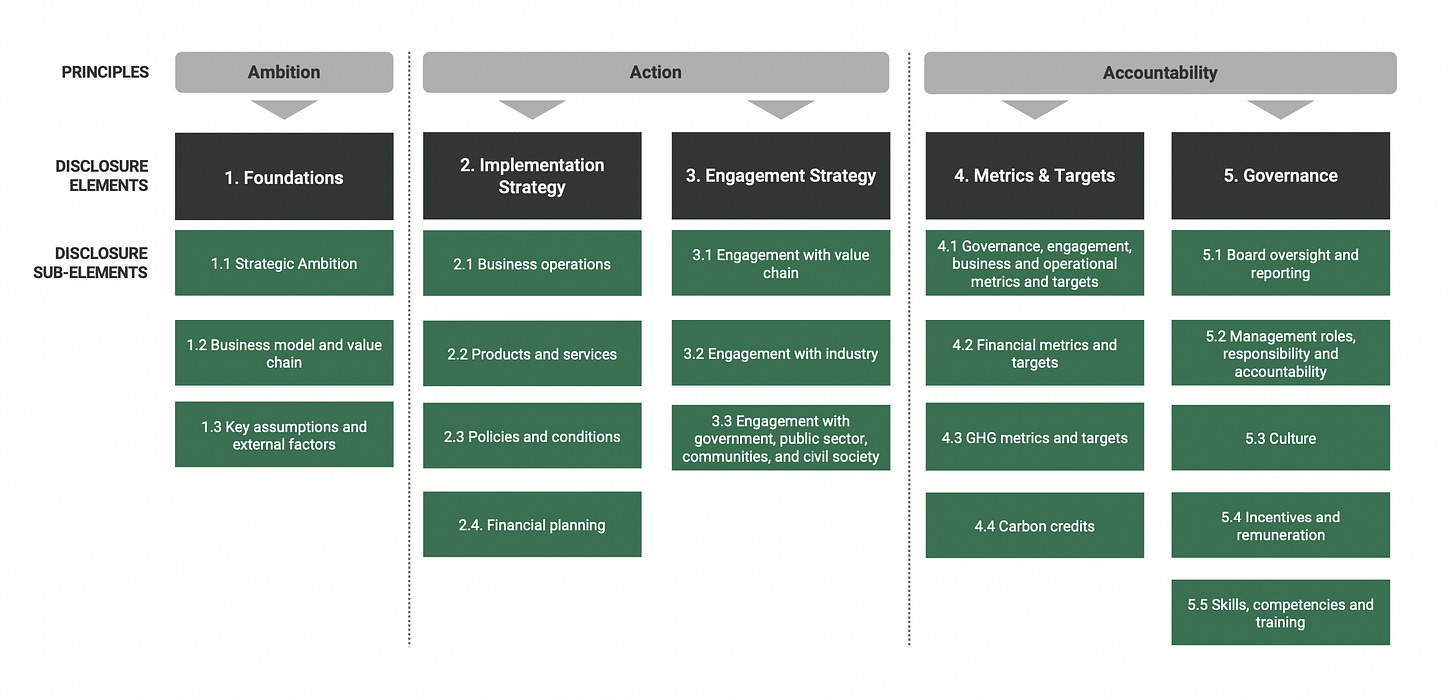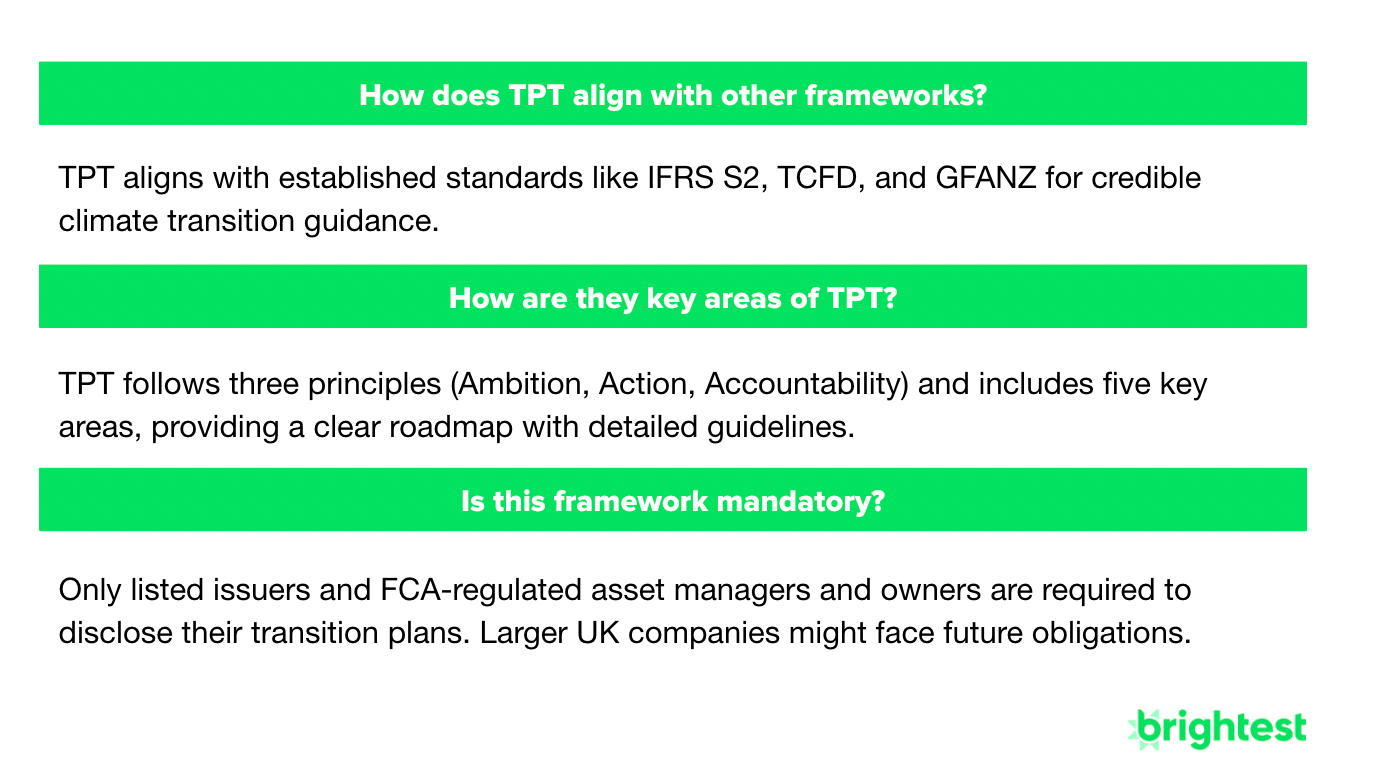Your Guide to the new UK Transition Plan Taskforce (TPT) 'gold standard' framework
Learn all about the newly published Transition Plan Taskforce and what the requirements for companies are.
In a landmark move towards sustainability, the UK Transition Plan Taskforce (TPT) unveiled its transition plan disclosure framework at the London Stock Exchange on October 9, 2023. This framework is expected to be a game-changer, challenging businesses to move faster toward a low greenhouse gas (GHG) emissions economy.
At its essence, the framework strives to encourage uniformity and consistency in climate transition disclosures, serving as a guiding force for the corporate world's commitment to achieving a net-zero transition.
Source: Transition Plan Taskforce
Timeline of the TPT
The TPT made its debut in November 2021 at the COP 26, spearheaded by the UK Chancellor, with the objective of harmonizing private sector climate transition plans.
Following an extensive consultation process initiated at the COP 27 Climate Summit in Egypt in November 2022, the TPT has worked diligently to finalize the framework.
This process was finalized with the publication of the final framework on October 9th 2023.
This collaborative taskforce comprises a diverse coalition of private and public sector leaders, prominent UK corporations, and experts drawn from academia, government, and civil society. Key figures who have been supporting TPT are Sue Lloyd, Vice-Chair at ISSB (International Sustainability Standards Board), Julia Hoggett, CEO of the London Stock Exchange; and Amanda Blanc, CEO at Aviva Group.
Source: Transition Plan Taskforce
Interlinkage with other frameworks
In the sustainability landscape, where numerous regulations, standards, and frameworks coexist, it may be a bit confusing where the TPT stands.
The TPT Framework is intentionally designed to harmonize with and extend upon the final climate-related disclosure standard (IFRS S2) issued by the ISSB in June 2023. Furthermore, it draws upon the recommendations of the Task Force for Climate-Related Disclosures (TCFD) and the framework established by the Glasgow Financial Alliance for Net Zero (GFANZ) for developing credible, comprehensive, and comparable net-zero transition plans. Notably, both the ISSB and GFANZ are members of the Taskforce.
The Transition Plan Disclosures Landscape, as outlined in the TPT Disclosure Framework, emphasizes that its recommendations for creating a Transition Plan are not meant to stand in isolation but instead offer supplementary guidance on what constitutes best practice for a climate transition.
Source: Transition Plan Taskforce’s Disclosure Framework
“…We welcome steps taken by the Transition Plan Taskforce to ensure this framework is consistent with the ISSB Standards and the Taskforce’s strong support for the vision of a global baseline of climate-related disclosures, which will provide much needed consistency and comparability for investors and enable companies to communicate with existing and potential investors.” Sue Lloyd, Vice-Chair at ISSB
Navigating the Framework
The TPT Framework incorporates three guiding principles: Ambition, Action, and Accountability. It is structured around five areas:
Foundations: Companies are encouraged to articulate their goals for a low GHG emissions, climate-resilient economy and looking into how these objectives align with benefits for stakeholders and the environment. Additionally, companies should state the implications of these goals on their business model, value chain, and key dependencies.
Implementation Strategy: It's crucial to detail specific measures affecting operations, products & services, policies, and their financial impact on the entity's performance.
Engagement Strategy: Collaboration and engagement with various stakeholders are highlighted, emphasizing the importance of collective efforts towards the shared sustainability goals.
Metrics and Targets: Businesses are expected to disclose key GHG and financial metrics/targets for tracking their progress, ensuring transparency and accountability. This should also include carbon credits purchased.
Governance: The framework encourages companies to explain how transition plans are integrated into their governance structure and delineate the steps taken to ensure this integration becomes a reality. This may include management roles, incentives and remuneration,
or company culture change.
This roadmap to sustainability comes complete with a set of disclosure guidelines for each of these five categories, underscoring the clarity and consistency that the framework strives to achieve.
Below is an overview of the 5 areas of TPT across the 3 principles.
Source: Transition Plan Taskforce’s Disclosure Framework
Is the Transition Plan Taskforce's framework obligatory?
Currently, only listed issuers and FCA (Financial Conduct Authority)-regulated asset managers and owners are mandated to disclose their transition plans. However, this requirement operates on a "comply or explain" basis, allowing these businesses to forego disclosing transition plans if they can provide a reasoned explanation.
Nonetheless, the UK government has committed to exploring the possibility of requiring the largest companies in the UK to disclose their transition plans, if they have them. Whether this would also follow a "comply or explain" approach remains uncertain.
So what are the key take aways on the TPT?
As sustainability gradually takes a center stage in the business world, the TPT's framework is a significant step forward, offering a gold standard for companies to follow. By setting the bar high, it encourages businesses to contribute to the net zero transition, and is bound to reshape the way reporting is performed among listed companies.
In alignment with Brightest’s efforts to stay up to date with the latest regulatory frameworks and standards, our team recently added the Transition Plan Taskforce framework into our list of reporting standards you can pick from on our software. Discover more about our software and consulting services on www.brightest.io.
This Week in Sustainability is a weekly email from Brightest (and friends) about sustainability and climate strategy. If you’ve enjoyed this piece, please consider forwarding it to a friend or teammate. If you’re reading it for the first time, we hope you enjoyed it enough to consider subscribing. If we can be helpful to you or your organization’s sustainability journey, please be in touch.

